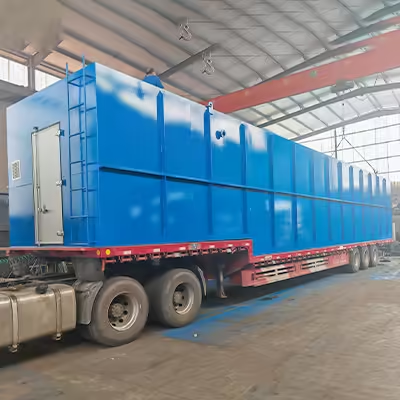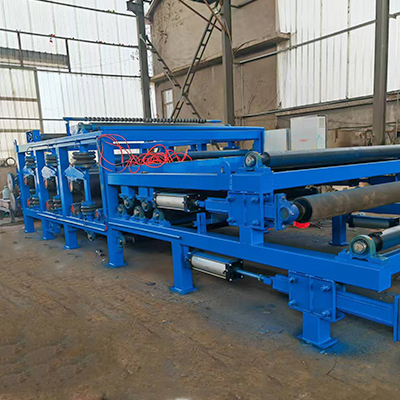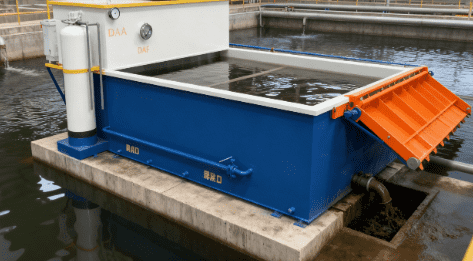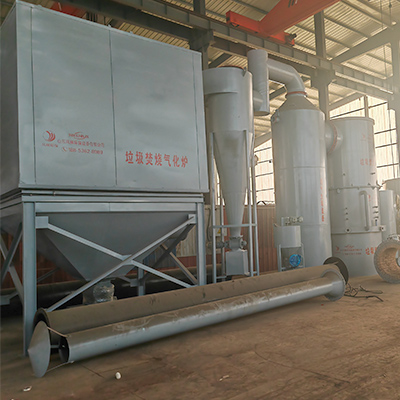Welcome to My Blog! 🌟
I’m so glad you’re here! Before we jump into the exciting content, I’d love for you to connect with me on my social media platforms. It’s where I share extra insights, interact with our amazing community, and post regular updates. Here’s how you can join the conversation:
📘 Facebook: Follow me on Facebook for more updates
Now, let’s dive into the journey ahead. I hope you find everything here both engaging and valuable. Together, let’s explore, learn, and grow! 🚀
Table of Contents
Introduction
Industrial wastewater treatment plays a crucial role in maintaining environmental compliance and ensuring that wastewater generated from manufacturing, chemical, and other industrial processes is properly treated before being discharged into the environment. However, like all machinery, industrial wastewater treatment equipment is prone to failure. These failures can disrupt operations, lead to non-compliance with environmental regulations, and result in costly repairs.
Understanding the most common types of failures and how to mitigate them is essential for ensuring the efficiency and longevity of industrial wastewater treatment equipment. In this article, we will explore the six most common failures in industrial wastewater treatment equipment, provide insight into their causes, and offer tips for how to prevent or address these issues before they escalate.
By the end of this guide, you will have a comprehensive understanding of common industrial wastewater treatment equipment failures, helping you maintain your system’s functionality and avoid costly downtime.
NO 1. Clogging of Filters and Membranes
Understanding the Importance of Proper Filtration
One of the most common failures in industrial wastewater treatment equipment is the clogging of filters and membranes. These components are responsible for removing solids and other contaminants from the wastewater before it moves further into the treatment process. Over time, these filters and membranes can become clogged with debris, sludge, or chemicals, which reduces their efficiency and may cause system malfunctions.
Common Causes of Clogging:
- Excessive solids: Industrial wastewater often contains high levels of suspended solids, which can build up in filters and membranes, leading to clogging.
- Chemical buildup: Some chemicals used in industrial processes can form deposits on filters or membranes, eventually causing them to become blocked.
- Insufficient cleaning: Lack of regular cleaning or maintenance can lead to the accumulation of debris, making the filtration system less effective.
How to Prevent Clogging:
- Regular cleaning: Establish a routine cleaning schedule to ensure that filters and membranes are thoroughly cleaned and maintained.
- Monitor wastewater composition: Frequently check the composition of the wastewater entering the system. By controlling the amount of solids and chemicals, you can prevent premature clogging.
- Install pre-treatment systems: Implement pre-treatment methods, such as screening or settling, to reduce the load on the filtration system and prevent clogging.
Impact of Clogging on Operations
Clogged filters and membranes can have significant consequences on wastewater treatment operations. When these components become blocked, the flow of water through the system is reduced, leading to slower treatment times. In some cases, clogging can cause pressure buildup, which may lead to equipment failure or even leaks. Additionally, clogged filters and membranes can result in the discharge of untreated or poorly treated wastewater, violating environmental standards and regulations.
NO 2. Pump Failures and Malfunctions

The Role of Pumps in Industrial Wastewater Treatment Equipment
Pumps are essential components in industrial wastewater treatment equipment. They are responsible for moving water through the various stages of the treatment process, ensuring that wastewater flows smoothly from one area to another. When pumps fail or malfunction, it can bring the entire treatment system to a halt, resulting in significant downtime and potential regulatory fines.
Common Causes of Pump Failures in Industrial Wastewater Treatment Equipment:
- Wear and tear: Pumps, especially those that operate continuously, can suffer from wear and tear. Over time, the seals, bearings, and other components may degrade, causing malfunctions.
- Clogged impellers: Solid debris or sludge may clog the impellers in the pump, reducing its efficiency or causing it to fail entirely.
- Incorrect installation or selection: If the wrong type or size of pump is chosen for the specific wastewater treatment application, it can lead to operational problems, including pump failure.
How to Prevent Pump Failures:
- Routine maintenance: Implement a preventative maintenance program that includes checking for wear, lubricating parts, and replacing components that show signs of degradation.
- Proper pump selection: Ensure that the pumps chosen are suitable for the type and volume of wastewater they will be handling. Oversized or undersized pumps can lead to performance issues.
- Monitor pump performance: Use monitoring systems to track pump performance and identify potential issues before they result in a failure.
The Consequences of Pump Failures in Industrial Wastewater Treatment Equipment
When a pump fails in an industrial wastewater treatment system, it can cause delays in treatment, leading to a backlog of wastewater that must be processed. This can overwhelm the rest of the treatment equipment, potentially leading to equipment damage or a complete system shutdown. Additionally, pump failures may lead to the release of untreated wastewater into the environment, which can result in environmental contamination and legal penalties.
NO 3. Aeration System Failures

The Importance of Aeration in Wastewater Treatment
Aeration systems are essential for the biological treatment of wastewater. These systems introduce air into the treatment tanks, providing oxygen to microorganisms that break down organic matter. Without sufficient oxygen, the microorganisms cannot perform their function effectively, leading to incomplete or poor-quality treatment. As such, aeration system failures can significantly hinder the efficiency of industrial wastewater treatment equipment.
Common Causes of Aeration Failures:
- Blower issues: Blowers that inject air into treatment tanks may become clogged, damaged, or worn out over time, causing aeration to fail.
- Oxygen supply issues: If the aeration system is not delivering enough oxygen to the microorganisms, the biological treatment process will not be effective.
- Damaged or blocked diffusers: Aeration diffusers, which release air into the water, can become clogged with sludge, biofilm, or scale, reducing the efficiency of the aeration process.
How to Prevent Aeration Failures:
- Regular maintenance: Perform routine checks on blowers and diffusers to ensure they are in good working condition.
- Monitor oxygen levels: Continuously monitor oxygen levels in the treatment tanks to ensure they remain within the optimal range for biological activity.
- Inspect diffusers: Inspect diffusers for blockages or damage and replace them when necessary.
The Impact of Aeration Failures on Treatment
Aeration failures can lead to inefficient wastewater treatment, resulting in an inability to remove organic matter from the water. If the biological treatment process is insufficient, the water may remain polluted, leading to the release of untreated or partially treated wastewater. This not only impacts environmental compliance but also increases the overall cost of treatment due to the need for additional processes.
NO 4. Chemical Dosing Equipment Failures

The Role of Chemical Dosing in Industrial Wastewater Treatment Equipment
Chemical dosing equipment is used to add chemicals to wastewater to adjust its pH, coagulate solids, or aid in other chemical treatment processes. If chemical dosing equipment fails, it can result in an improper chemical balance, rendering the treatment process ineffective.
Common Causes of Chemical Dosing Failures in Industrial Wastewater Treatment Equipment:
- Clogged dosing lines: Solidified chemicals or particulate matter can clog the dosing lines, preventing the correct amount of chemicals from being introduced into the wastewater.
- Pump malfunctions: The pumps responsible for chemical dosing can fail due to wear, clogging, or improper calibration.
- Improper chemical mixing: Inadequate mixing of chemicals before they enter the treatment system can lead to inefficiency and poor treatment outcomes.
How to Prevent Chemical Dosing Failures in Industrial Wastewater Treatment Equipment:
- Routine calibration: Regularly calibrate chemical dosing equipment to ensure accurate dosing.
- Clean dosing lines: Keep dosing lines clean and free of blockages to maintain proper chemical flow.
- Monitor chemical usage: Monitor the volume of chemicals being added to the wastewater to ensure the correct quantities are used for effective treatment.
The Consequences of Chemical Dosing Failures in Industrial Wastewater Treatment Equipment
Chemical dosing failures can lead to unbalanced treatment processes, resulting in insufficient coagulation, poor pH control, or ineffective disinfection. This can compromise the quality of treated water, making it non-compliant with environmental regulations. In some cases, improper chemical dosing may also cause damage to the equipment or generate hazardous byproducts.mpliant with environmental regulations. In some cases, improper chemical dosing may also cause damage to the equipment or generate hazardous byproducts.
NO 5. Improper Sludge Handling

TThe Importance of Efficient Sludge Management in Industrial Wastewater Treatment Equipment
Sludge is an inevitable byproduct of wastewater treatment processes. Effective sludge management is crucial to the success of industrial wastewater treatment equipment. Improper sludge handling can lead to equipment failures, environmental contamination, and inefficiencies in the treatment process.
Common Causes of Sludge Handling Failures in Industrial Wastewater Treatment Equipment:
- Overloading of sludge storage: If the sludge storage tanks are overloaded, they can overflow, releasing untreated sludge into the environment.
- Inefficient dewatering: Sludge dewatering equipment may fail or become inefficient, leading to excessive moisture in the sludge, which increases disposal costs.
- Clogged sludge pumps: Sludge pumps can become clogged with solids or insufficiently maintained, preventing proper sludge removal.
How to Prevent Sludge Handling Failures in Industrial Wastewater Treatment Equipment:
- Monitor sludge levels: Regularly monitor sludge volumes and ensure that storage tanks have sufficient capacity.
- Maintain dewatering equipment: Regularly inspect and maintain dewatering equipment to ensure it is functioning effectively.
- Inspect sludge pumps: Check sludge pumps for blockages or wear and replace components when necessary.
The Impact of Improper Sludge Handling on Industrial Wastewater Treatment Equipment
Improper sludge handling can cause a range of issues, from overflow of untreated sludge to increased operational costs. Inefficient dewatering can lead to the accumulation of excess moisture, making the sludge heavier and more expensive to dispose of. Additionally, improper handling can result in environmental contamination, regulatory violations, and costly damage to equipment.
Table: Comparison of Common Industrial Wastewater Treatment Equipment Failures
| Failure Type | Common Causes | Preventative Measures |
|---|---|---|
| Clogging of Filters and Membranes | Excessive solids, chemical buildup, improper maintenance | Regular cleaning, monitoring wastewater composition |
| Pump Failures | Wear and tear, blocked impellers, improper installation | Regular inspections, proper pump selection, maintenance |
| Aeration System Failures | Blower issues, oxygen supply issues, damaged diffusers | Routine maintenance of blowers, monitor oxygen levels |
| Chemical Dosing Failures | Clogged dosing lines, pump malfunctions, improper mixing | Regular calibration, cleaning, monitoring chemical dosing |
| Sludge Handling Failures | Overloading, inefficient dewatering, clogged pumps | Monitor sludge levels, maintain dewatering equipment, inspect pumps |
Conclusion
Maintaining industrial wastewater treatment equipment is critical for ensuring environmental compliance and operational efficiency. By understanding the common failures that can occur, such as clogging, pump malfunctions, aeration issues, chemical dosing failures, and improper sludge handling, you can take steps to prevent these issues before they lead to significant downtime or legal violations.
Routine maintenance, regular inspections, and proactive monitoring are essential strategies for keeping your wastewater treatment equipment running smoothly. By staying on top of potential problems and addressing them early, you can ensure that your treatment processes are effective and that you meet environmental regulations consistently.
FAQ
What are the most common failures in industrial wastewater treatment equipment?
The most common failures include clogging of filters and membranes, pump malfunctions, aeration system failures, chemical dosing equipment failures, and improper sludge handling.
How can I prevent clogging in my wastewater treatment system?
Regular cleaning, monitoring wastewater composition, and using pre-treatment processes can help reduce clogging in your system.
Why is aeration important in wastewater treatment?
Aeration provides the necessary oxygen for microorganisms to break down organic matter in the wastewater. Without adequate aeration, the treatment process becomes less effective.
What maintenance should I do to prevent sludge handling failures?
Regularly monitor sludge levels, ensure proper sludge dewatering, and inspect sludge pumps to prevent handling failures.
How often should I inspect my industrial wastewater treatment equipment?
Regular inspections should be scheduled, ideally every few months, but the frequency may vary based on the equipment’s usage and the complexity of the system.






